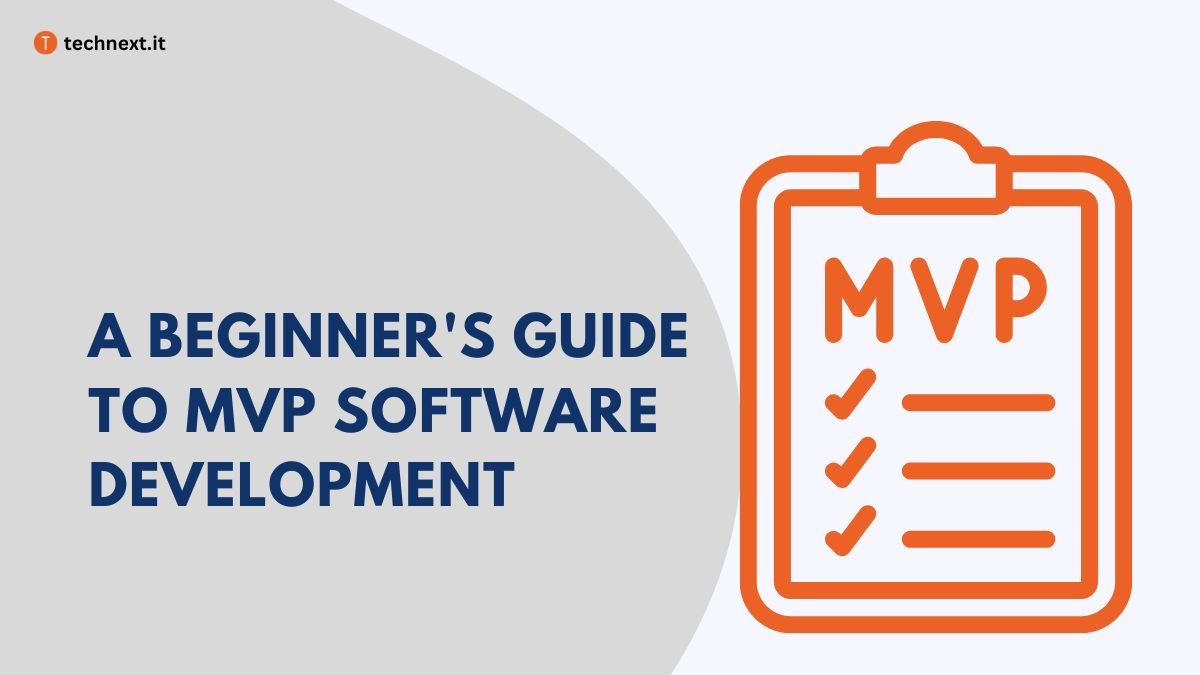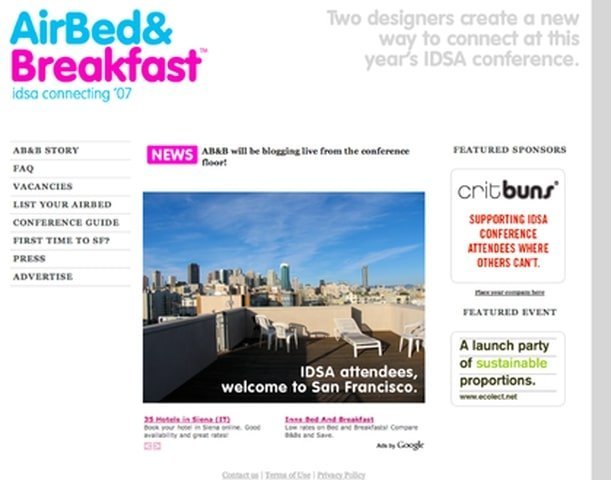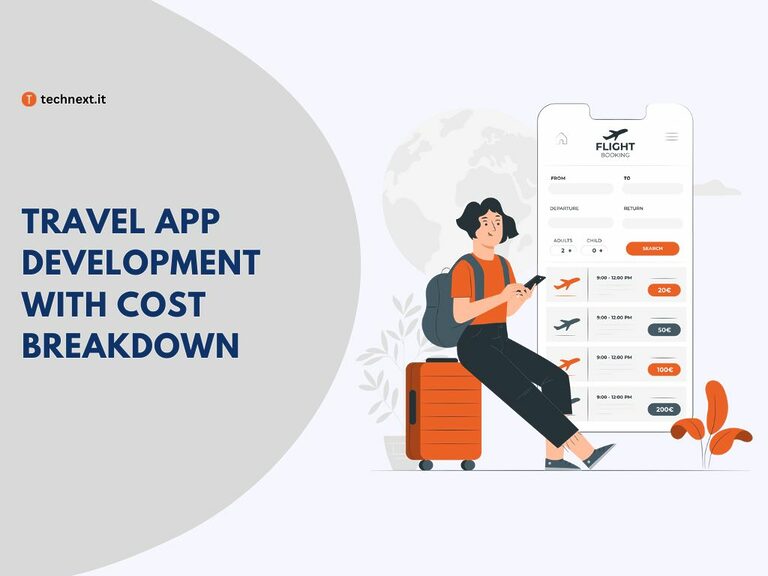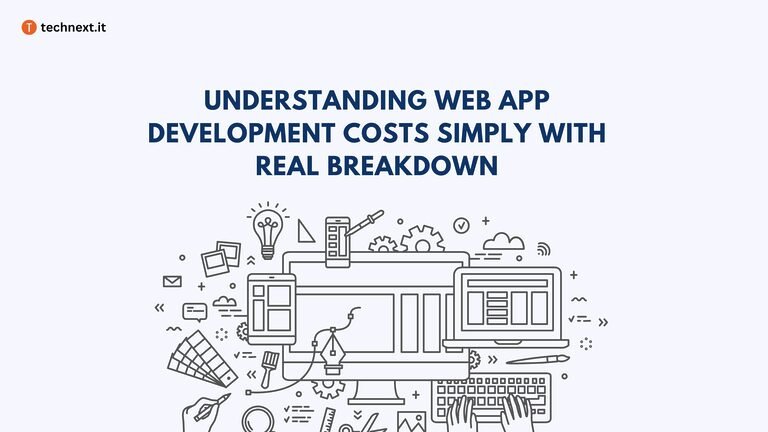A Beginner’s Guide to MVP Software Development in 2024
MVP is the first step of your dream tech startup, and building it the right way can give you a good start. Learn the right way of MVP software development and expert suggestions to minimize the cost.

Do you know 90% of startups fail? Shocking, Isn’t it?
But there is a stage that can save you from this massive failure- developing MVP, or minimum viable product
It is the first phase of your great startup. In the MVP stage, you will develop the product with the just-needed features to test the market. It’s a great way to collect early-stage feedback from your users. You’ll understand better what your users want and their major problems.
If you are a passionate entrepreneur or hustler from the software development or startup world, MVP will help you save money by not developing the whole product at once. Many startups fail by not listening to their customers’ needs. They can’t achieve the product market fit or PMF, but they develop a full-scale product; lose time, effort, and money.
Your chances of failure will decrease massively if you follow this beginner’s guide to MVP software development in 2024. It’s written by a founder for the founders.
MVP in Software Development or Startup World
Before delving too deeply into the explanation of MVP, let me quickly share the story of Airbnb and how a basic MVP enabled them to assess their business potential and establish a company worth 75 billion dollars.
Like many other startups, Airbnb’s founders, Brian and Joe, began with a problem. They were struggling to pay rent for their San Francisco apartment and required assistance with managing it. So, they decided to rent out the extra spaces to conference attendees.
While working on that, they discovered another problem: finding hotel rooms during conference season is hard., And they came up with a solution: AIR BEDS, FREE WIFI, AND BREAKFAST, and built a website with few simple must-have features targeting just tech conference attendees.

It’s interesting to note that Airbnb’s initial website was a simple MVP, unlike the high-end mobile app and million-dollar website they have now. By launching this basic version, they were able to test the market without investing heavily in a feature-rich solution. The MVP also enabled them to gather user data and create more effective and customized solutions in the future.
Like Brian and Joe, many founders prefer to test their ideas before investing too much in them. To do so, they typically use MVPs, proof of concept, or prototypes.
How are MPVs different from a Proof Of Concept or Prototype?
You’re not alone if you need to figure out how MPVs differ from a Proof Of Concept or Prototype. Let me break down the concept of the difference between MVP, proof of concept, and prototypes.
When developing software, you’ll need to test your project to understand what your customer wants – and this is where the three most popular approaches to testing come in: proof of concept (POC), prototype, and minimum viable product (MVP).
Starting with MVP, or minimum viable product, is a version of your product that only has enough functionality to gain traction among early users, allowing you to decide whether or not your product is a market fit, which can minimize your development resource waste.
Conversely, a prototype is a sample of your proposed product that is used during the pre-production phase to test and confirm your design or concept. You can use the prototype to show your user and potential investors how the product will appear.
Last but not least, proof-of-concept (POC) is a functional model that proves your concept or idea can be put into practice. The main reason to build a PoC is to save your resources instead of investing in a flawed concept.
Hopefully, you’ve realized that MPV, POC, and prototype are all related to product development, but they serve different functions. From the software development perspective, POC and prototype demonstrate the viability and validate your designs or concepts, while your MPV meets early consumers’ basic requirements and collects input for further development.
Related Article:
7 Real-World Proof of Concept Examples with Free Template
The Importance of MVPs: Why People Build it?
Before embarking on product development, it is essential to understand why creating an MVP is so important.
First and foremost, MVP allows you to launch your product (or a representation of your product) quickly and within a small budget by focusing on only the most essential features and functionality. Makes it easy for people to engage with your idea and help with further development.
Another advantage of building an MVP is that it enables you to validate your product idea and determine whether a viable market exists. By testing with a basic version of your product, you can test your product’s market fit and collect insightful feedback.
This brings us to the next advantage, saving you significant resources in the development process. You can identify areas for improvement and prioritize future development efforts, leading to a better final product.
Finally, building an MVP can assist you when you want internal or external investors to fund your project. You can make a more substantial investment case and secure the funding you require to take your product to the next level.
Avoiding Analysis Paralysis: When to Stop Planning and Start Building Your MVP
Every passionate founder wants to launch pixel-perfect products; Who doesn’t like the WOW factor, right? Therefore, it is pretty normal for founders to take time to plan, research, and analyze. But when you spend too much time researching, you enter the phase where you are stuck in the planning stage without making any progress in getting your product to market. This phenomenon is known as analysis paralysis and can lead to wasted resources and missed opportunities.
So, when should we stop planning and start building the MVP? As a general rule, experts recommend you start building your MVP as soon as you have a clear idea about the problem you want to solve and the target user you serve. If you want to know the time precisely, explore some key indicators suggesting it’s time to take the leap and bring your MVP to life.
You Are Done with “The Groundwork”
“Groundwork,” Aka preparation stage to create the MVP. Some of the groundwork steps include doing market research, identifying the users’ pain points, etc. We have provided the details in the step-by-step guide. Make a checklist of groundwork from that guide to determine when you are done with the groundwork.
You Have Identified the Core Features
If you are done with the list of core features that are necessary for your product to function, you are good to go. Start building your MVP. You can always add more features later based on user feedback and demand.
Related Article
Expert Guide to MVP Web Development with Cost Estimation
How to Build an Effective MVP Software in 2024
Many founders dream of creating a simplified version of their product to test the market. However, there are countless ways to mishandle this test, much like a chemistry test in high school, even with a solid understanding of the formula. Trust me when I say this, there are the right ways of building an MVP and the wrong ways of building an MVP.
We often think MVPs are the leanest possible version of the final product. Although the idea behind MVPs is to prioritize only the necessary features, not to permit you or your developer to create a subpar product.
In fact, an MVP must maintain a certain level of quality in terms of user experience, performance, and functionality. The scope might be limited, but you can not compromise the quality.
It’s important to keep in mind that the purpose of creating an MVP is to validate your hypothesis and gauge the accuracy of your assumptions. In order to do so, there are several parameters or characteristics that your MVP must meet.
- Serves at least one specific target audience or user group.
- Address at least one pain point for that user group.
- Has a distinctive and well-designed user experience that is functional, usable, and comfortable.
- It can be developed and released quickly.
Achieving these parameters may appear simple, but in reality, it often demands the expertise of highly skilled developers to build an MVP compared to the final product.
Read Also:
Complete Guide to Ideal Software Development Team Structure
The 6-Step Process of MVP Software Development
Step 1: Conduct Market Research and Understand Your Target Users
You need to find out if there’s a market for your product before you begin developing your MVP. For this, you can research by using surveys, focus groups, and online research, among other things. The goal is to learn about your intended audience, such as their demographics, interests, pain points, purchasing habits, and market trends.
Once you know there’s a demand for your product; you must identify the competitors. Identify if the market is already crowded or not. If so, it’s better for you to avoid it; if not, find out what makes the difference.
You can also talk to a few users to create your user persona. This does not imply that you must conduct extensive research or work for many years in the industry. Some conversations can help. Talk to someone who has the problem, is solution-driven, and will buy. Make the most detailed description of the problem and the features your users want in the solution for future reference.
Step 2: Define the Scope and Set Goals
Once you have conducted market research and gained insights into your target users, the following step in building an MVP is to define the product’s scope and set goals.
Defining the scope allows you to establish clear boundaries for the project, identify the requirements for each phase, and determine the resources needed to successfully complete the project within the given time frame. You can also understand expectations and deliverables and identify risks, opportunities, and areas for improvement. To define the scope, you need to include the budget, working method, deliverables, milestones, timelines, and project documentation.
After defining the scope, it’s also crucial to establish goals for your MVP that are both realistic and time-bound. These goals should fit with your overall business goals and help you measure how well your product is doing. You can measure them in different categories. Which includes a must-have financial goal – decide how much you may spend at each stage and what backup funds are available.
So, your sales goal covers your expected revenue, sales targets, and profit plans for the long term. Don’t forget your customers- how many early adopters do you need for feedback, what percentage of users do you want to retain? Last but not least, plan the success standards so that you can regularly monitor and keep track of your progress.
Related Article
How to Optimize a SaaS Organizational Structure + Real Examples
Step 3: Identify Features and Functionalities to Include
This stage is crucial because there are too many features, and you can’t build them all simultaneously. So you have to choose which feature you want to develop that will gain you user transactions.
To finalize your features, you can use opportunity statements. Map out the user journey from finish to end so that you can create a “pain and gain” map for every action, from buying the product to solving their problem. Then summarize the pains and gains into opportunity statements. By using opportunity statements, you can identify your target audience’s specific needs and pain points and develop solutions that address them effectively.
You can also use prioritizing matrix to determine which core features should be implemented at what stage of the development lifecycle. It’ll help you sort through the complexity by categorizing your features into “must-haves,” “nice-to-haves,” “low-priority,” and “don’t include in MVP” categories based on their effect on three metrics—impact, effort, and risk. This is how you will know which features are necessary for your MVP and which ones can wait till you have more time and money.
Step 4: Choose the Right Technology Stack
Now that you are settled for the core features, it’s time to choose the technology stack. But choosing the right tech stack for an MVP can be confusing, so consider some factors before choosing one.
Choose a popular stack with an active community; you will have the necessary support and resources to build and maintain your MVP.
Consider tech stacks that prioritize security and suit PHP, Java, and JavaScript, or security-focused frameworks, which can help keep your app and users’ data safe.
You also need a stack that can scale parallelly with your user base. Open-source frameworks are often an excellent choice for scaling because of their flexibility and customization.
Evaluate the size and complexity of your application and the associated development cost to ensure you choose a stack that can meet your needs.
Since your goal for MVP is to receive feedback and iterate, the technology stack should be flexible. Agile project management is popular for MVP development since it handles changes well.
Tech stack selection requires a robust tool ecosystem. You can use existing tools and libraries to save time and effort during development.
By carefully considering these factors, you can select a tech stack that meets your needs by taking these steps. First, you need to define your requirements, then research and evaluate the potential technologies while keeping your team’s expertise in mind. Last but not least, test the technology and determine its long-term impact.
Related Article
22 Essential Startup Tools and Software for Smart Founders
Step 5: Develop the MVP or Outsource Development to a Cost-Effective Team
After enough research process, you need a team to develop the MVP. You have two options for developing an MVP – in-house development or outsourcing.
If you are a technical person, you can develop MVP in-house with your co-founders. It will give you complete control over the development process, from ensuring the product’s requirements to the changes needed to make to the project. But if you are not a technical person, you need to hire and maintain a team including CTO, developer, designer, and other technical staff. Which can be expensive, considering you are developing the MVP.
You can consider outsourcing. It can be a cost-effective way to develop the MVP without investing in an in-house team, and it will also give you access to a pool of talented developers with expertise in the latest technologies. But while choosing, you need to be careful about your outsourcing partner because there will be communication and cultural barriers, and you may struggle to manage development remotely. For example – My company Technext has developed web, mobile, and UI/UX solutions for 100 enterprises and founded a few successful startups.
Also has ten years of project management, database architecture, technical, design, and testing experience. Technext also has exceptionally skilled workers and a near-perfect work process.
Step 6: Test, Iterate, optimize, and launch the MVP
It shouldn’t take months to build an MVP; it should be weeks. Set a time box and write down your specifications. Try to develop the features within the time box if necessary to cut the spec; don’t extend the time limit. This is not your final product, so build the MVP prototype fast.
After that, test your prototype to identify any issues and bugs and fix them. Then iterate and refine your MVP based on user feedback. The next step is to enhance the user experience by optimizing the performance and efficiency of your MVP. Then lunch the MVP.
Related Article
Building Quality Assurance Team: Everything You Need to Know
What Comes Next: Leveraging Feedback from Your MVP
Creating a minimum viable product (MVP) is not your end goal. This is just the beginning of your dream product.
Once your MVP is ready for launch, you must promote the MVP to the proper marketing channels and audience to track user behavior and collect feedback to identify areas for improvement.
Then circle back and begin again from the beginning. Plan, develop, test, iterate, and improve your MVP until you have a Minimum Marketable Product. MMP will help you to determine whether the idea is worth pursuing further by testing the product with a wider market with higher expectations.
Read Also
How to Name a Startup Business Perfectly (With Expert Tips)
Footnote
No matter what you’re building—SaaS, enterprise software, or an ambitious startup product like Shopify or Airbnb—building an MVP is inevitable because it allows you to test your hypothesis with real users. However, to ensure accurate results, it’s crucial to maintain quality in the development process. Although building an MVP may seem simple, founders often struggle due to the low budget, short timeline, and high standards required for success.
The general rule is to create a Minimum Viable Product (MVP) that effectively performs essential tasks. This involves creating a scaled-down version of the final product that effectively addresses users’ needs and resolves their pain points. Then make the MVP available to real users, collect real data, and improve it.
If your MVP is well accepted, then congratulations, you’ve found a viable product idea. If the MVP fails, congratulations; it saved you from failing even more. Regardless, developing an MVP effectively will always lead to success for the founder.


